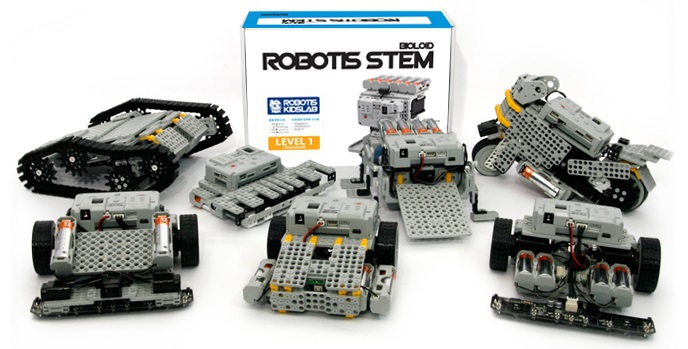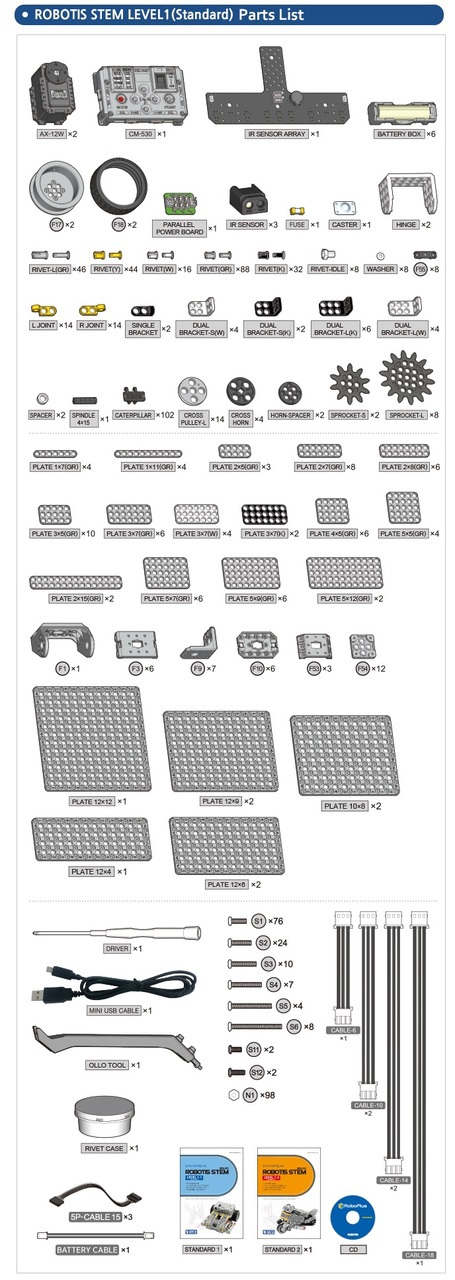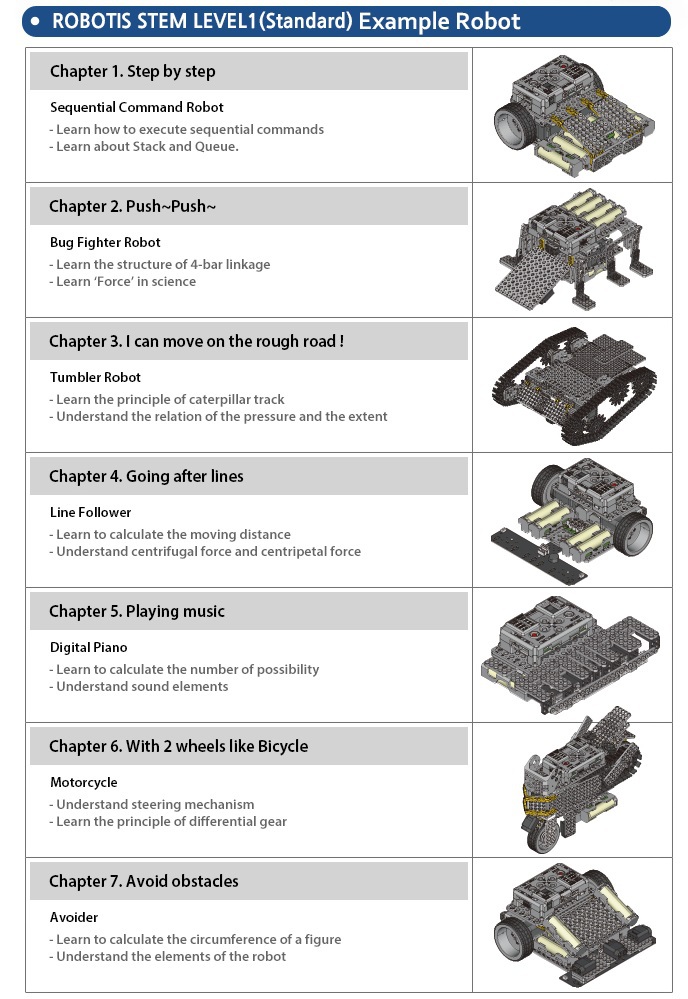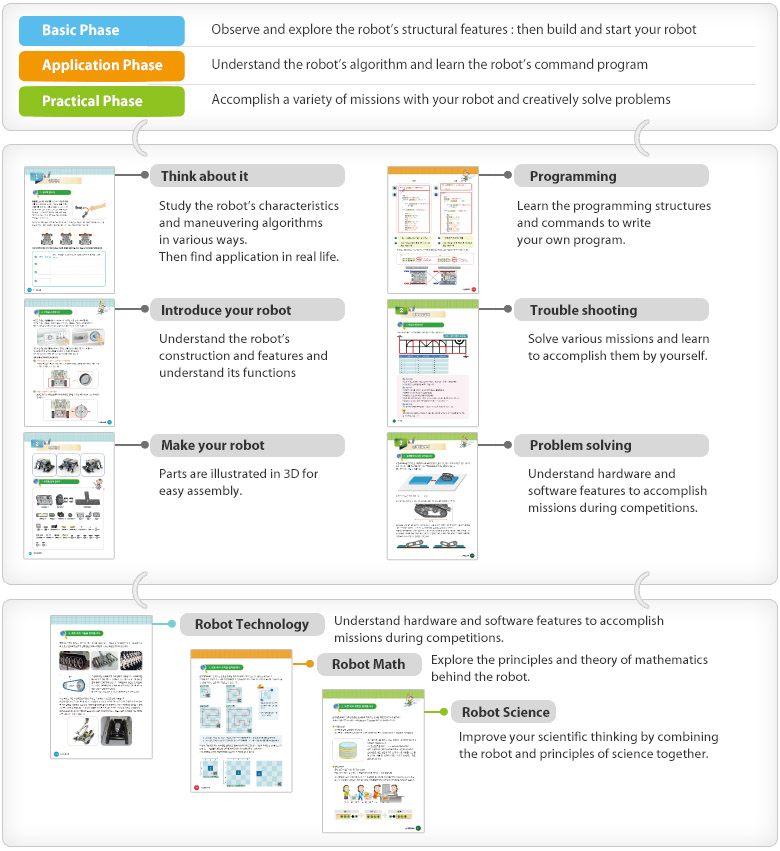
PRODUCT OVERVIEW
Learn the principles of STEM (Science, Technology, Engineering, and Mathematics) with the ROBOTIS STEM Level 1, a comprehensive introductory robotics kit geared for high-school.
The kit includes fully-colored workbooks that provide detailed assembly instructions. Alternatively, you can download the R+Design program for a preview of robot assembly and structure. Zoom in/out or rotate the 3D model to view the robot from any angle.
KEY PRODUCT INFORMATION
- Grade Level: 7th - 12th Grade
- Lesson Hours: 42+
- Number of Lessons: 21 Lessons
- Student to Kit Ratio: 1:1 Recommended (Up to 2:1)
- Curriculum Guide:
- STEM Level 1 Curriculum Example
- See Phase outline below
- Support & BOM Guide: ROBOTIS E-Manual
- Software: R+Design, R+Task, R+Motion (iOS, Android, macOS, Windows Compatible)
PRODUCT is subject to the Original Manufacturers warranty, repair, and return policy.
30-DAY MONEY-BACK GUARANTEE
- If you are not satisfied with your product you may return it within 30 days of receipt for an exchange or refund. The product must be unopened and in its original packaging. The customer is responsible for return shipping charges.
ONE YEAR WARRANTY OVERVIEW
- Unless otherwise noted, ROBOTIS warrants its products against defects for 1 year. Products that are not manufactured by ROBOTIS or are co-developed with ROBOTIS may not be covered under warranty.
BATTERY WARRANTY
- Unless otherwise noted, ROBOTIS battery products with Lithium-Polymer chemistry (LiPo) are warrantied for 6 months from the date of purchase. "Over-discharge, misuse, or incorrect charging practices may void this warranty."
DISCLAIMER
- You will not qualify for a warranty or refund if there is normal wear & tear, abuse to the product, improper tampering, or accidental damage.
- Worn out gears, burnt motors, and PCBs, and damaged cables are not covered under warranty.
- Modification of the Dynamixel Firmware to disable Error Status or Shutdown Alarms may also void our warranty.
- Please back up source codes and files in the product before requesting RMA. ROBOTIS is not responsible for any software and file loss in the product.

The kit features the following parts:

Building the ROBOTIS STEM Level 1 Example
You can build up to (7) example robots with the ROBOTIS STEM Level 1 kit:

Programming the ROBOTIS STEM Level 1 Examples
- The ROBOTIS STEM Level 1 can be programmed using RoboPlus (Windows). The kit comes with a download CD but you can download it here.
- For programming ROBOTIS STEM Level 1, you will need RoboPlus Task (Windows, Android), which is included in the RoboPlus Suite. Alternatively, you can download the new version of RoboPlus Task, R+Task 2.0 (Windows, macOS, iOS, Android).
Curriculum Guide
The ROBOTIS STEM Level 1 kit comes with (2) workbooks that are fully illustrated in color. The workbooks span (7) chapters and provide a methodological training process. Each chapter is further divided into (3) sections to cover the following lesson plans:
- Basic Phase: Students learn the scientific and technological principles behind the robot they are about to build. At the end of this chapter, there is a detailed assembly manual.
- Application Phase: Students learn the principles of robot programming and the mathematics of programming.
- Practical Phase: Students apply their knowledge to creatively solve advanced problems and configure their robots for competitions.












